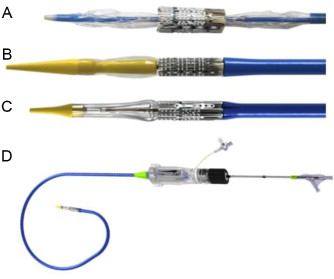March 10, 2013 By Steven E. Greer, MD The Healthcare Channel
The main reason that Medicare has limited coverage for the Edwards Lifesciences (EW) Sapien percutaneous aortic valve is the high perioperative complication rate of ischemic strokes, in excess of 9%, as well as femoral artery complications. The newer second generation Sapien XT, with a smaller diameter “French” profile, was hoped to reduce the complications and make the TAVR procedure safer. The newest data on the second-gen Sapien do not seem to support the claims from Marty Leon, financial backer of the valve, that the new valve is safer.
 The PARTNER II study was presented at the ACC meeting in San Francisco. (The Sapien XT is approved and in use in Europe.) From the Edwards press release, “The PARTNER II Trial enrolled 560 patients deemed inoperable for traditional open-heart surgery at 28 hospitals in the United States between April 2011 and February 2012. Patients were randomized to receive one of the two Edwards transcatheter aortic heart valves: 276 received the SAPIEN valve, and 284 received the SAPIEN XT valve.”
The PARTNER II study was presented at the ACC meeting in San Francisco. (The Sapien XT is approved and in use in Europe.) From the Edwards press release, “The PARTNER II Trial enrolled 560 patients deemed inoperable for traditional open-heart surgery at 28 hospitals in the United States between April 2011 and February 2012. Patients were randomized to receive one of the two Edwards transcatheter aortic heart valves: 276 received the SAPIEN valve, and 284 received the SAPIEN XT valve.”
While major vascular complications were reduced (9.6% v 15.5%), the second-gen valve did not reduce stroke caused by the procedures within 30-days of operation. The new Sapien XT had a 4.3% stroke rate at 30-days, while the older larger Sapien actually had a lower 4.1% rate (p-value .88).
The adoption of the Sapien TAVR device in America will continue to be slow due to low reimbursement making the procedure unprofitable, and due to the high stroke rates.
